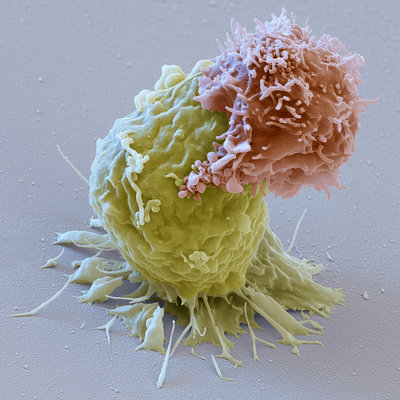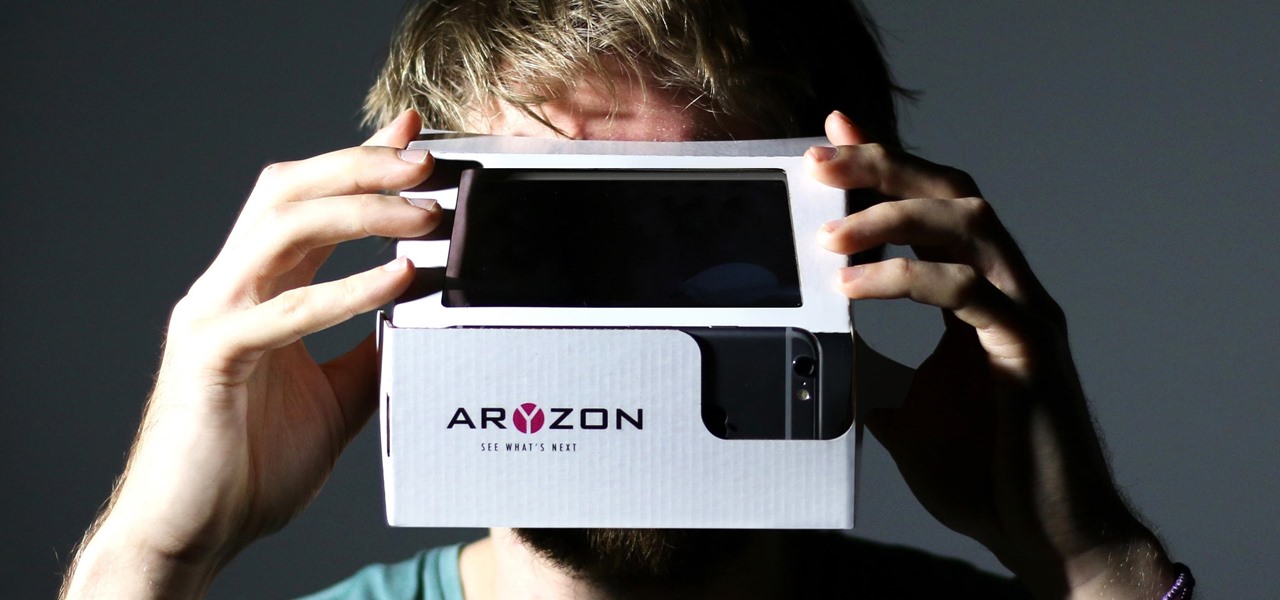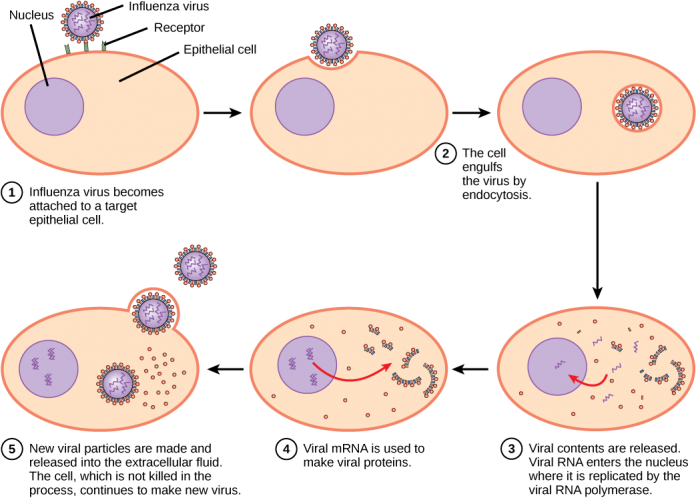In gene therapy, scientists infect cells with retroviruses that can be programmed to carry a gene. This gene can override a mutation and encode a protein that performs normally. However, there may be some side effects. Originally in these cells, the mutated genes may cause deformed proteins to be translated or possibly certain proteins may not be produced at all. In gene therapy, the hope is that normal functional genes genes are introduced into the cell; and the proteins are encoded normally. Gene therapy uses engineered viruses to deliver genes into cells. These are called viral vectors. Viruses such as Adeno-Associated Virus (AAV) are especially good for treating retinal diseases. Adeno-Associated Virus is a small virus that only elicits a weak immune response.
Other uses of gene therapy may be to target cancer and genetic disorders. Scientists have cured type I diabetes in dogs using gene therapy. In doing so, one gene was introduced to sense glucose, and another gene was introduced to respond to the glucose absorption. The scientific discoveries that accompany gene therapy are quickly being developed. It is a technology that is expanding rapidly and it may be one of the greatest frontiers of modern medicine. As long as only minimal immune responses are generated against the retroviruses that carry the new genome that is introduced into the cell , there is no reason to worry about adverse side effects of the procedure. In any advent, gene therapy is an interesting and thought provoking technology that may lead to huge breakthroughs in the near future in the treatment of cancer and particular genetic disorders.














































